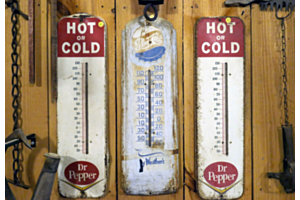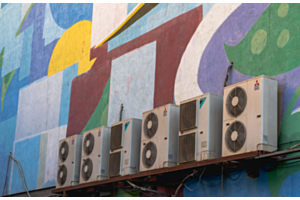Is a mini-split cheaper to run than central air?

You make many home improvement decisions with your wallet as your guide. It hasn’t steered you wrong so far, and you plan on using it as a litmus test to determine your next cooling solution.
You’re torn between central air conditioning and a ductless mini split system. Which is the least costly of the two?
A ductless mini split is far cheaper to run than central air.
Let’s explain why!
The difference comes down to how each cooling system operates.
A central air conditioner features an outdoor unit and a series of ducts that connect it. The ducts are not seamless, so the air that travels through them exits before reaching your living room. The expert consensus is that air loss is anywhere from 25 to 30 percent.
A ductless mini split has an outdoor compressor and at least one indoor air-handling unit attached through copper piping. The indoor units are strategically placed in zones to provide concentrated cooling.
Since a mini split is ductless, it doesn’t lose any cool air. You get a 100 percent blast of cold air that begins working as soon as you turn the mini split on. You should notice the difference within several minutes.
The lack of wasted air is one reason of many why mini splits are cheaper to run than central air conditioners, so let’s continue.
How they cool also plays a role. Mini splits use the aforementioned zones, which are parts of the home that are warmer than others and need cooling. For example, if you have an upstairs office or baby’s room, these are good candidates for mini splits because heat rises.
A central air conditioner doesn’t cool by zone. The cold air blows out at the same intensity across the house, including in the areas that don’t need it. This wastes cold air, not to mention the energy and electricity the AC must use to run.
Admittedly, a ductless mini split system costs more to initially install, but you’ll recoup what you spent quicker than you’d expect. The same can’t be said for a central air conditioner. They cost less at the start but ultimately cost you more as time goes on and the AC begins racking up issue after issue.
Are you still feeling unsure whether you should choose a ductless mini split system or a central air conditioner? Here are more advantages of a mini split that central AC can’t match.
Easy installation: The absence of ductwork is excellent from an energy-saving perspective, making installing a mini split system fast and efficient.
Fewer parts: A mini split contains fewer moving parts than a central air conditioner, which means a reduced rate of breakdowns.
Simple maintenance: It’s also more expedient to maintain a ductless mini split due to its aforementioned reasonable number of parts.
Customized cooling: You can add as many indoor units as required to make your home into an ice fortress (okay, well maybe not that cold, but close). Most mini splits can support anywhere between one and eight indoor units.
Set the temperature how you want it: Each indoor unit has independent temperature controls. You can set one zone to 72 degrees Fahrenheit and another to 69.






